This article is part of the Under the Lens series
Not Just Ramps—Disability and Housing Justice
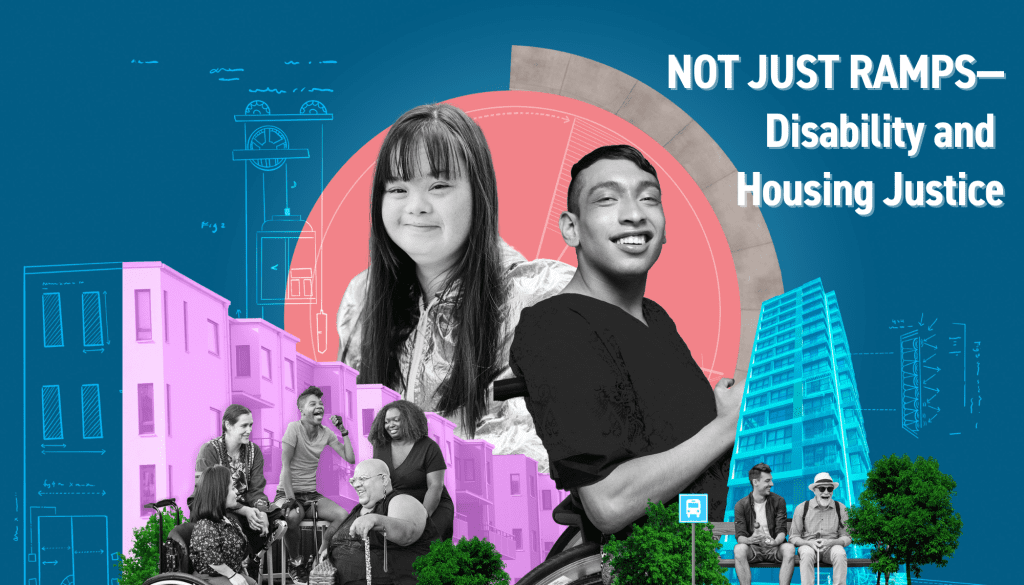
Illustration by Resistance Communications
Because definitions of what’s considered a disability vary, and not everyone who meets one of those definitions identifies as disabled, it can be hard to get a clear number of just how many people in the United States are disabled—except that it’s likely higher than you think. According to the Centers for Disease Control and Prevention, 27 percent of adults have a disability, while other sources come up with 10 to 15 percent of the entire population. However you measure, this means there are tens of millions of Americans (and more if you include their family members) whose living situations and housing searches are affected by disability.
Place, class, and race are deeply intertwined. It’s important when delving into disability topics to understand that disability, class, and race are similarly connected, so before we get into the specific connections between housing and disability, I want to set a little bit of context.
Let’s start in the 1970s and 1980s, when the disability rights movement was gaining steam in the United States. Disability rights activists were fighting for equal access and opportunity for all people living with disabilities, and their yearslong campaign led to people with disabilities being added to the protected classes covered by the Fair Housing Act in 1988. The movement also resulted in the passage of the Americans with Disabilities Act in 1990. These powerful legislative provisions establish rights to inclusion and accommodation for disabled Americans, a true victory for the disability rights movement.
However, the promise of the Fair Housing Act and the Americans with Disabilities Act have not been fully realized, because of ineffective and infrequent enforcement at most levels of government.
Along with the lack of enforcement, there’s another issue that’s been getting in the way of ensuring equal access and opportunity for all people living with disabilities. Because the disability rights movement tended to be heavily white and higher income, and they focused their efforts on a particular version of independence—which might not be feasible or desirable for all disabled people—“entire swathes of our community were left behind, especially Black and poor,” says Anita Cameron, director of minority outreach for Not Dead Yet, a national disability rights group.
As a result, in the mid 2000s, a new wave of activists began to craft a disability justice movement that recognizes the intersections of different oppressions. “Disability justice is leadership by the most affected,” says Cameron, who is Black and disabled and describes herself specifically as a disability justice activist. “It takes in all of us, and those of us who are most impacted, you know, lead that fight.”
‘When I finally got my first accessible apartment, to be able to roll into the shower, to reach the microwave, to look out the peephole . . . [it] was a dream.’
Disability justice activists understand that racism and ableism are intimately and intricately connected. One of the ways racism manifested in the United States in particular in the eras of slavery and Jim Crow was that being Black was often described explicitly as a disabling condition, listed in racist laws and rhetoric right next to intellectual and psychiatric disabilities as reasons people might be unfit for various jobs or the responsibilities of citizenship. This history in turn has made many disabled Black people hesitant to speak out about their disabilities, afraid they would be seen as compromising the effort to prove that Black people are in fact capable and competent. A new generation is breaking that silence, refusing to accept that they must set aside part of who they are, calling on disability organizations to address racism and civil rights and on racial justice organizations to address ableism.
According to a 2019 report by the National Disability Institute, Black Americans experience disability more often (14 percent, as compared to 11 percent of non-Hispanic white Americans) because of how structural racism concentrates them near environmental contamination, in dangerous jobs, and in poverty, and because poverty and racism cause chronic stress and make it more difficult to get proper and ongoing medical treatment. On the flip side, the National Disability Institute also shows that disabled people of color experience harsher consequences of their disability—37 percent of Black disabled people live below the poverty line, compared to 24 percent of white disabled people, for example.
Housing: A Top Priority
A major goal of disabled activists has been to realize what Cameron calls a “civil right to live in the community,” meaning not to be unnecessarily kept in an institution like a nursing home. The Supreme Court has ruled that such a right exists. But it can’t be realized without housing in the community for people to move into. “One of the major things that keeps people trapped in institutions is the lack of affordable, accessible, and integrated housing,” says Cameron, who has herself experienced both homelessness as a teenager and displacement due to rising costs as an adult.
It also keeps people trapped in inadequate and inaccessible private housing. Tanya Lavelle of Disability Rights Texas notes that when her organization is working with someone who needs an accommodation that can’t be realized in their current home, such as someone with a chemical sensitivity, “we try and move people out. But that’s really hard because there’s nowhere to go. And so oftentimes, people just have to suffer.”
Keith Jones, president and CEO of Soul Touchin’ Experiences, a disability-focused consultancy, has worked in the past at independent living centers, which are agencies that support disabled people to live independently. “The two main issues that we face in the community has been access to affordable accessible housing, and transportation,” he says.
It’s not only the United States that is struggling with this. The lack of housing is so bad, says Cameron, that in Canada—whose Medically Assisted Aid in Dying law does not require participants to have a terminal illness—disabled people are choosing to die, or are being pressured into it, because they cannot find adequate housing.
Housing Accessibility
Disability and housing intersect in many different ways. What comes to mind for most people is physical accessibility—and even that has more dimensions than you might expect. Accessibility needs in housing include accommodations in the areas of mobility, height, visual and auditory perception, sensory sensitivity, chemical sensitivity, and chronic illness and immunosuppression, as well as for cognitive, intellectual, and psychiatric disabilities. There are baselines of accessibility that ideally are built into new construction, and then modifications and accommodations that can be made to existing construction to match individuals’ needs.
“I was the kid who always adapted to keep up,” says Allison Donald of Disability MidSouth. “When I finally got my first accessible apartment, to be able to roll into the shower, to reach the microwave, to look out the peephole . . . [it] was a dream.”
What makes a home accessible is different for different people, however. “Disability is very complex. And you know, accessibility can look differently if you’re deaf or blind compared to if you have a mobility disability,” says Jewelles Smith, a disabled Canadian researcher who studies disability and gender. “Also, as you age with a disability, your disability could change. So what has been working for you might not work as your disability changes.”
Donald agrees that neither disability nor the accommodations to it are fixed and unchanging things. “The one thing that I wish non-disabled people would understand and developers would understand is that having a disability is not a monolithic experience. Yes, we may have the same disability, but it may manifest itself differently. If I’m on crutches, and I have cerebral palsy, and my friend is in a wheelchair and has cerebral palsy, some accessibility needs are going to be different.”
Accessibility is also not always a matter of physical spaces—a wide range of policies, rules, and procedures, whether governmental or private, can also have accessibility implications, often unintended.
Discrimination
Though violating the law around provision of accessible homes and accommodations is itself discrimination, people with disabilities also face discrimination in housing beyond the dearth of accessible homes; they’re often turned down by landlords on the basis of disability even when the unit in question is accessible.
Discrimination based on disability accounted for more than half the fair housing complaints filed in 2021, according to the National Fair Housing Alliance. “If you even look like you might need modifications for an apartment or house, the landlords or property managers will find all kinds of excuses to steer you to another apartment, make the apartments unavailable, and otherwise prevent you from renting or participating in their programs,” writes Laura Ramos, president of Everyone for Accessible Community Housing Rolls! Inc.
“But when we talk about housing, particularly, we’re talking about if those who are in power, whether or not they say they like you enough to rent to you. Do I like you enough to sign off on approval of your housing loan?” says Jones. And, he notes, in this context, “disability doesn’t exist separate from, but is underpinned by, racism, classism, gender, gender identity.”
Sara Pratt, a lawyer with civil rights law firm Relman Colfax PLCC, and former deputy assistant secretary for Fair Housing Enforcement and Programs with the U.S. Department of Housing and Urban Development, says that despite the substantial amount of time she invested in fair housing education and training, she’s come to believe that active, funded enforcement is the only way to realize the accessibility requirements of the Fair Housing Act. The day we spoke she had just settled an accessibility case for $7.12 million against the Clover Group, a large northeast United States senior housing developer with properties in five states, which hadn’t complied with multiple accessibility requirements in any of their 50 properties. “This is not rocket science,” says Pratt. “If you have someone who knows what they’re doing, and they are attentive to it, and intentional about the design of the property, it’s relatively easy to comply.” The compounding of this lack of enforcement has led to an accumulating deficit of accessible units compared to the need—though no one seems to have measured how many.
Many states have tried to increase enforcement by folding the Fair Housing Act’s accessibility requirements into their state building codes, but even then, the local officials who are supposed to certify code compliance often don’t. Pratt said she once asked some officials in progressive Montgomery County, Maryland, why not and was told, “Nobody funds us to enforce it. So we don’t.”
Low-Income Housing Tax Credit properties, she noted, tend to be much better, perhaps because in that compliance-focused industry, a checkbox for certification of compliance with the Fair Housing Act is included on one of the required IRS reporting forms.
On the policy advocacy front, Lavelle has seen recent improvement in coordination between those working on disability topics and housers. “We’re working together more,” she says. “Concerns with disability and housing, that’s really becoming integrated into the [housing] conversation, whereas it may not have been before.” She has also been working with disability organizations, encouraging them to step up to advocate for affordable housing. “A lot of people defer to folks that might already be doing it, which is a teamwork vibe but, you know, we need help,” she says. “We need more people involved in it, because it touches everything.”
Affordability
Even when disabled people don’t face outright housing discrimination, the financial capacity to access housing is hard to come by: disabled people face greater challenges finding employment, and those who rely on disability payments face strict limits on accumulating assets. Not to mention, as Donald of Disability MidSouth points out, “living as a person with a disability is expensive anyway.”
Because accessible units are already in short supply, having an extremely low income can make it doubly hard to find a place to live, with accessible units often costing even more and turning over less often. But affordability is also a serious complication for many disabled people who don’t need physically accessible units. Poverty is both a cause and consequence of disability, and disabled people are disproportionately extremely low income, which puts huge pressures on their housing search. The poverty rate for disabled adults is twice that for non-disabled adults, but this varies by race. This leads to disabled people’s overrepresentation in the homeless population and among those who are involuntarily institutionalized. And many people just “make do” in homes that aren’t truly accessible to them. “You are relegated to towers,” says Donald, or “you’re relegated to places that are substandard in terms of living conditions.”
“The solutions are hardcore and unequivocal,” says Jones. “Public investment in high quality public housing that is commensurate with the populations and their realities in terms of affordability. That’s the role of the government to provide for the common good.”
Inclusion, Community
Finally, housing is a major setting for what determines whether disabled people experience inclusion or segregation, autonomy or paternalism. Where disabled people live and whether they are given the accommodations needed to do so with dignity or are instead relegated to nursing homes or tightly supervised group homes is fundamental to disability justice.
“Nobody wants to live in a disability-segregated ghetto experience,” says Cameron. “And when I say ghetto, I mean separate, not necessarily poor.”
Disability is not a fixed category—very few of us make it through our whole lives without being at least temporarily disabled by injury or illness, and the older you get, the more likely it is that you would benefit from accommodations of some sort. “People don’t want to think about it, but you age or you have accidents and [your] lives can change in a flash,” says Dawn Howard, director of community organizing at the Colorado Coalition on Disability.
Accessibility shouldn’t only matter when someone disabled lives in a home, notes Smith. “My biggest pet peeve is [that] when I can’t locate a place that’s fully accessible for me, I [can] make do, but I have lots of friends who are full-time wheelchair users, and they can’t visit me. [It] isn’t just about the person living [there] but it’s about how we live and how we can be community.”
‘Don’t be afraid of disabled people moving into your spaces. Often modifications are not as onerous as [you] think they’re going to be.’
That’s why disability-friendly housing and universal design are examples of the curb-cut effect—the name given to the fact that policies that create inclusivity and advance equity often also help a much wider swath of people: A curb cut designed for people who use wheelchairs also helps those temporarily on crutches, riding bicycles, pushing strollers, pulling suitcases, or making deliveries. In a similar fashion, disability-friendly housing (or universal design) choices will help an even greater number of people than it was designed for. Improved soundproofing, for example, which provides a reliably quiet place for those with sensory sensitivities, should also help all children learn and sleep better. Reducing chemicals in the air and eliminating fragranced products may be a short-term requirement for those with chemical sensitivities, but it will also generate improved short- and long-term health for all residents.
This can seem like a lot for housing developers to keep track of, but Smith has a reassuring message for them: “Don’t be afraid of disabled people moving into your spaces. Often modifications are not as onerous as [you] think they’re going to be. When you’re building or renovating, you don’t have to make it all accessible right away. But build things so that [they are] easily modified. [For example,] if you have a townhouse, build it so that your closets stack. That way, if you want to put in an elevator, it’s super easy to put an elevator into the unit.”
Donald says that there should be both a strong baseline standard of accessibility that all units start with and then an openness to understanding that people may still need modifications specific to their needs—but that many of those can be relatively easy. “If you have a conversation with them, 9 times out of 10 those things can be worked out at a low-cost, effective, and efficient way,” she says.
And Cameron and Donald say to housers: “don’t wait for us to come to you.” Cameron continues, “Include us in measurable, effective, non tokenizing ways, on your committees and councils and whatnot so that you can hear firsthand what our needs are. Reach out to us, listen to us, believe us, work with us, have us as partners. Until we as disabled people be in the forefront of people’s minds, housing justice is never gonna occur.”
Shelterforce’s series, Not Just Ramps—Disability and Housing Justice, will explore many of the topics raised here in more depth throughout the next couple of months.

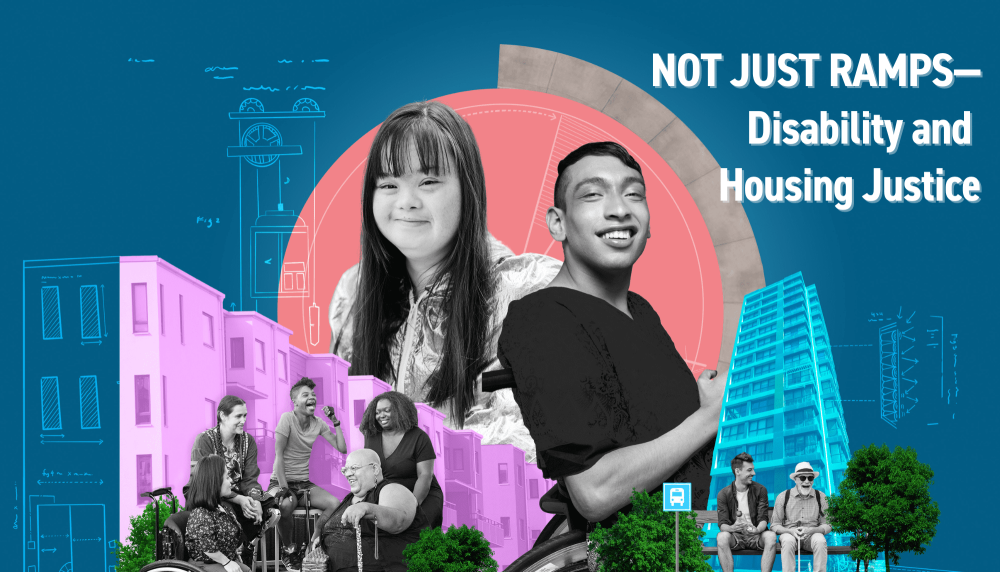

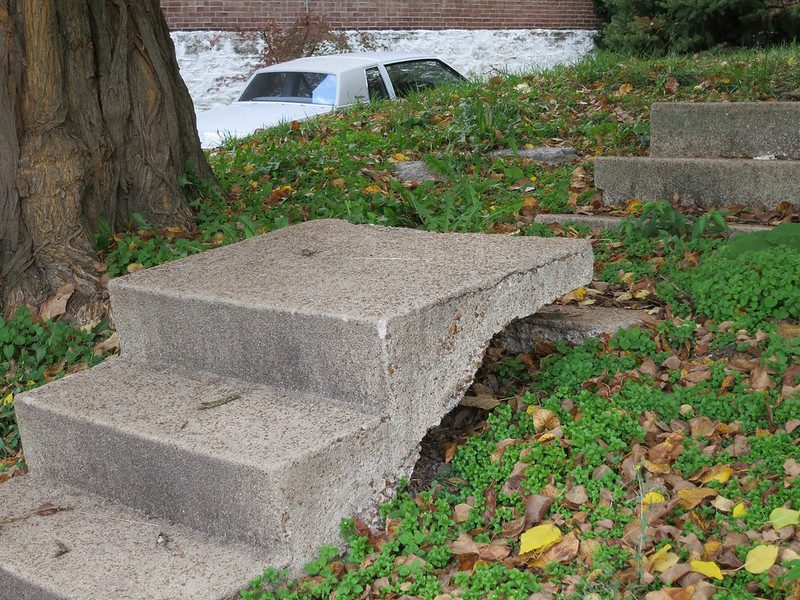
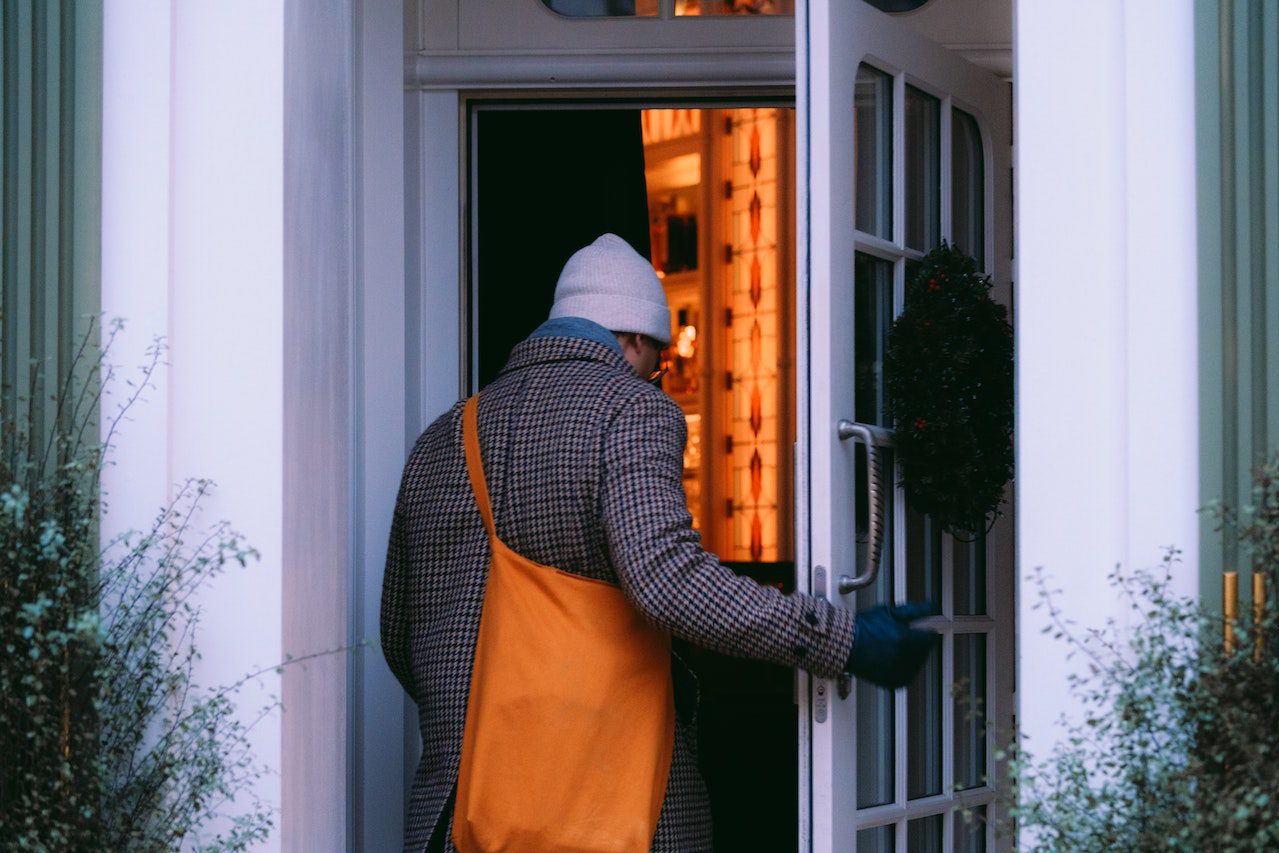
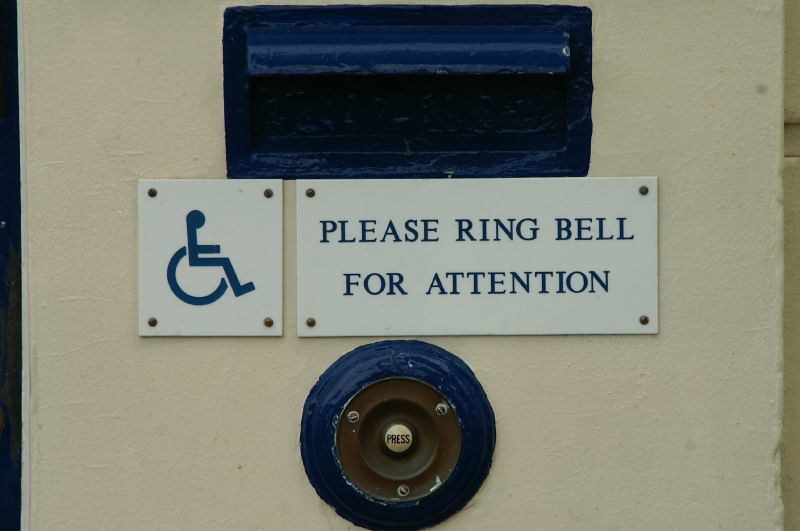
3i Housing of Maine (3i HoME) is a 501c3 non-profit developing 51 units of totally accessible supportive affordable rental units using principles of universal design. We are driven by our 3i’s: Independent living through Innovative technology in an Integrated home and community based setting. This article is affirmation of our mission. Thank you.
In need of a low income apartment because I’m homeless and have a 16yr. Old son seeking a stable environment to raise him
Hi Sonya, we are so sorry to hear about the housing struggle you and your son are facing. Shelterforce is a nonprofit media organization and publication dedicated to affordable housing, housing justice, and community development. While we cannot offer aid directly, our team and a few valuable contributors have put together a list of resources you can find here: https://shelterforce.org/need-help-finding-housing/
Since disability and poverty overlap so much, having HFAs require all affordable housing projects to set aside, say, 10% of the units for persons with disabilities could make a meaningful dent in the problem. In Columbus, Ohio, Creative Housing refers two of its clients with intellectual and often physical impairments to each of Homeport’s tax credit developments, provides rent assistance and assures supportive services. This kind of integration has worked well.